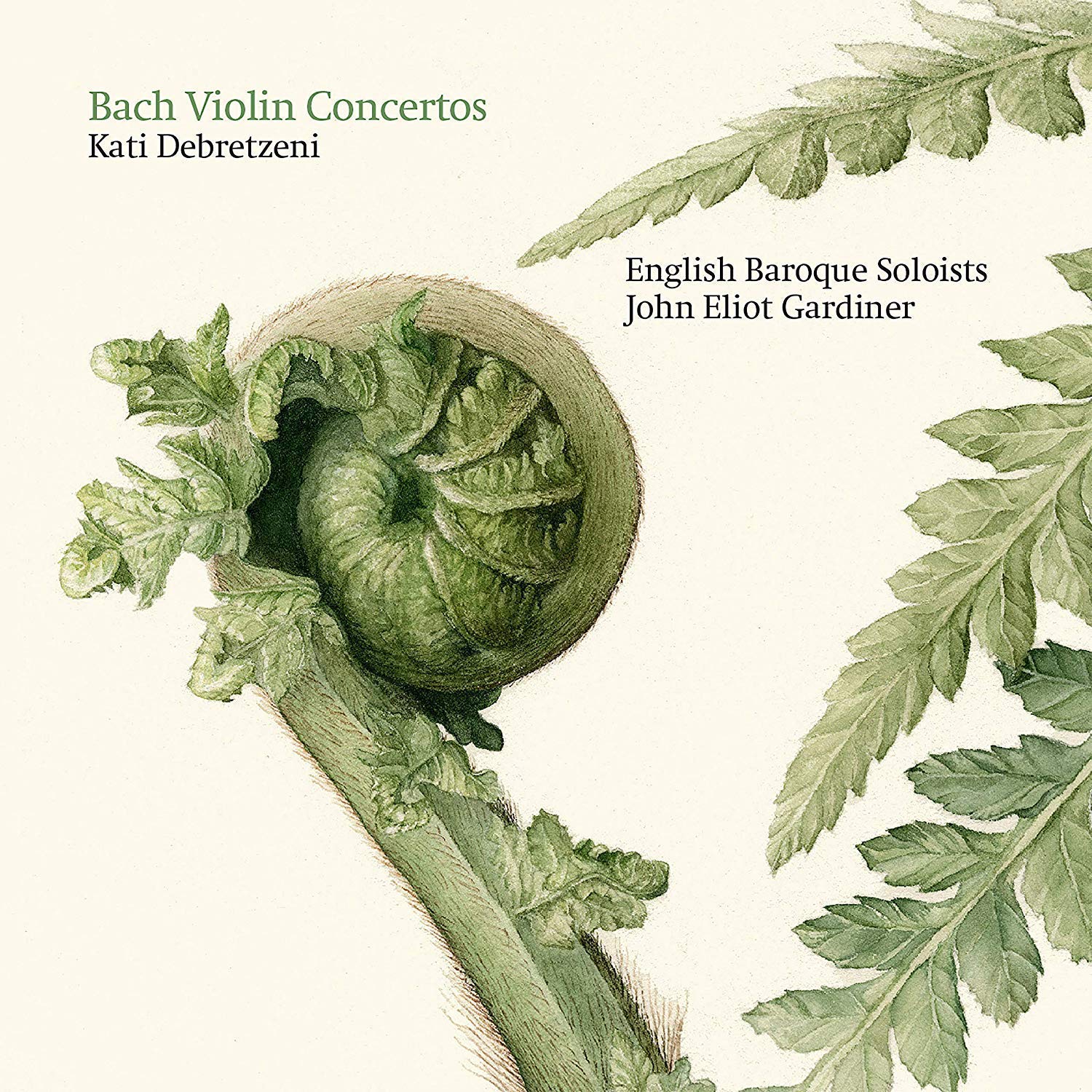Kati Debretzeni, English Baroque Soloists, John Eliot Gardiner
70:15
Soli Deo Gloria SDG732
On this accomplished CD, Kati Debretzeni, the leader of the English Baroque soloists among other things, plays the violin concertos in A minor (BWV 1041) and E major (BWV 1042) as you would expect and then adds two reconstructions drawn from the harpsichord concertos – a new version of BWV 1053 transposed down a tone into D major with its singing siciliano middle movement and a version of BWV 1052 in D minor, which has long been posited as a violin concerto in origin.
Debretzeni recalls the moment in the Bach Cantata Pilgrimage of 2000 when the beautiful Trost organ in the Schlosskapelle in Altenburg that Bach had played and commented on developed a fault and they had to fit in a recording of BWV 146 the next morning before flying home. The first two movements of Cantata 146 with obbligato organ form part of what Bach used again in BWV 1052. A version of the final movement is in Cantata 188. She also reflects upon the large number of violin obbligati in the church cantatas with pleasure and clearly the interplay between these various sources has informed her judgment of how to reach back behind the decisively keyboard-style passagework with its built-in bass line to a plausible violin original which needs a reconstructed basso continuo.
I enjoyed her playing as much as her editorial additions and decisions. Spirited and rhythmically infectious, she is well served by her 3.3.2.2.1 colleagues from the EBS and the beautifully judged continuo playing of James Johnstone. The slow movements never loose momentum – how easy it is to degenerate into a maudlin self-indulgence – while the outer movements never collapse into a scramble. They are helped by the wonderfully warm acoustic of St Jude’s, Hampstead Garden Suburb where they recorded.
Like Debretzeni, I hope that her versions find their way into the repertoire of many violinists. Bach did not only quarry his ‘instrumental’ work for concerto movements but used material from the cantatas, whether sacred or secular, to provide the sounds of heaven, and from the number of recordings of ‘arrangements’ appearing now, I can see that the process of re-inventing Bach’s multiple versions is set to continue. When they are in the hands of players so immersed in the whole oeuvre as this, we have a good deal to look forward to.
David Stancliffe
Click HERE to buy this CD on amazon.
